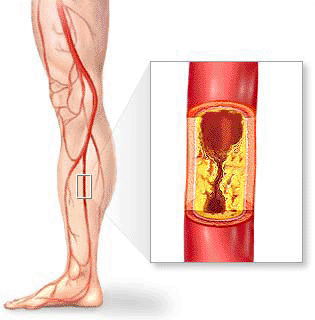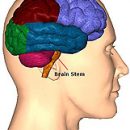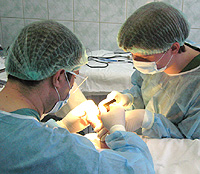What surveys are applied and how the subtercontracting atherosclerosis of the lower extremities is treated? Read in this article.
Content
Instrumental methods Diagnostics Supprusive atherosclerosis of the lower extremities
Ultrasound examination makes it possible to determine the level of atherosclerotic occlusion (violation of the patency due to the resistant closure of their lumen on any section) and the degree of blood supply to the distal departments of the affected limb.
To clarify the diagnosis to the reconstructive operation, X-ray angiography is performed. It allows you to determine the localization and length of the pathological process, the degree of damage to the arteries (occlusion, stenosis).
Modern magnetic resonance contrasting angiography is not inferior to X-ray information, but does not require hospitalization and is characterized by high safety for patients, as the contrast is administered intravenously.
Treatment of oblique atherosclerosis of the lower extremities
 The treatment of atherosclerotic lesions should be complex and continuous. Only this approach allows for many years to preserve the vital and physical activity
The treatment of atherosclerotic lesions should be complex and continuous. Only this approach allows for many years to preserve the vital and physical activity
Conservative treatment implies a decrease in the rate of progression of atherosclerosis, reducing the risk of thrombotic complications. For permanent reception, it is possible to recommend drugs reduced cholesterol — Statins (for example, Zocor, or other drugs from this group) or Allicor (natural anti-seaterosclerotic drug based on garlic). Preparations are used, extending vessels (verapamil, cylostazol), improving blood flow and reduce risk of thrombus formation (pentoxifyllin, refooliglucin, aspirin, Vessel Due F, Kuraltil).
With significantly pronounced ischemia, prostaglandinov preparations are successfully used (Alpostan, Vaison).
Therapeutic tools give a positive effect only after the multi-month reception, and in such a situation they should be considered as a mandatory addition to surgical treatment.
Surgical treatment
e oblique atherosclerosis of the lower extremities
Surgical treatment is shown at a significant reduction in the quality of life due to atherosclerotic lesions and, especially, in the threat of irreversible changes in organs and tissues.
Indications for the implementation of reconstructive operations on the limb vessels are in fact of significance:
- Signs of threatening gangrenes of limbs and its first signs (fingertips, stall ulcers);
- Permanent pain in the foot at rest. Relief is possible with constantly lowered leg. Patients can sleep sitting for months;
- Reducing the distance of nonsense walking less than 200 meters if the courses of conservative treatment do not increase the distance, and this distance does not suit the patient.
The natural course of this disease is associated with progressive deterioration. Usually the rise of symptoms of ischemia occurs slowly, but this is true only until thrombosis occurs. Then the clinical course can deteriorate sharply. Conservative treatment does not stop the progression of the disease and, approximately, 25% of patients ends with limb amputation. Timely performed surgical revascularization allows you to improve the quality of life and keep the ability to work in most patients with obliterating atherosclerosis.









